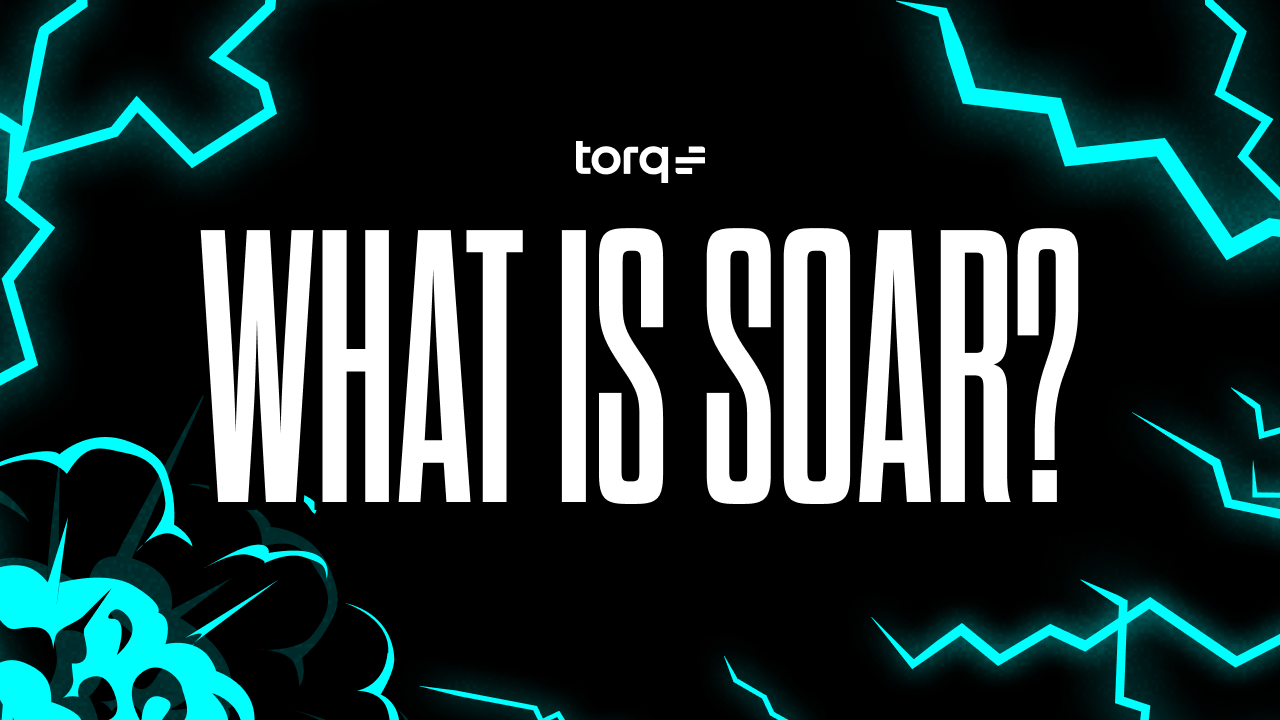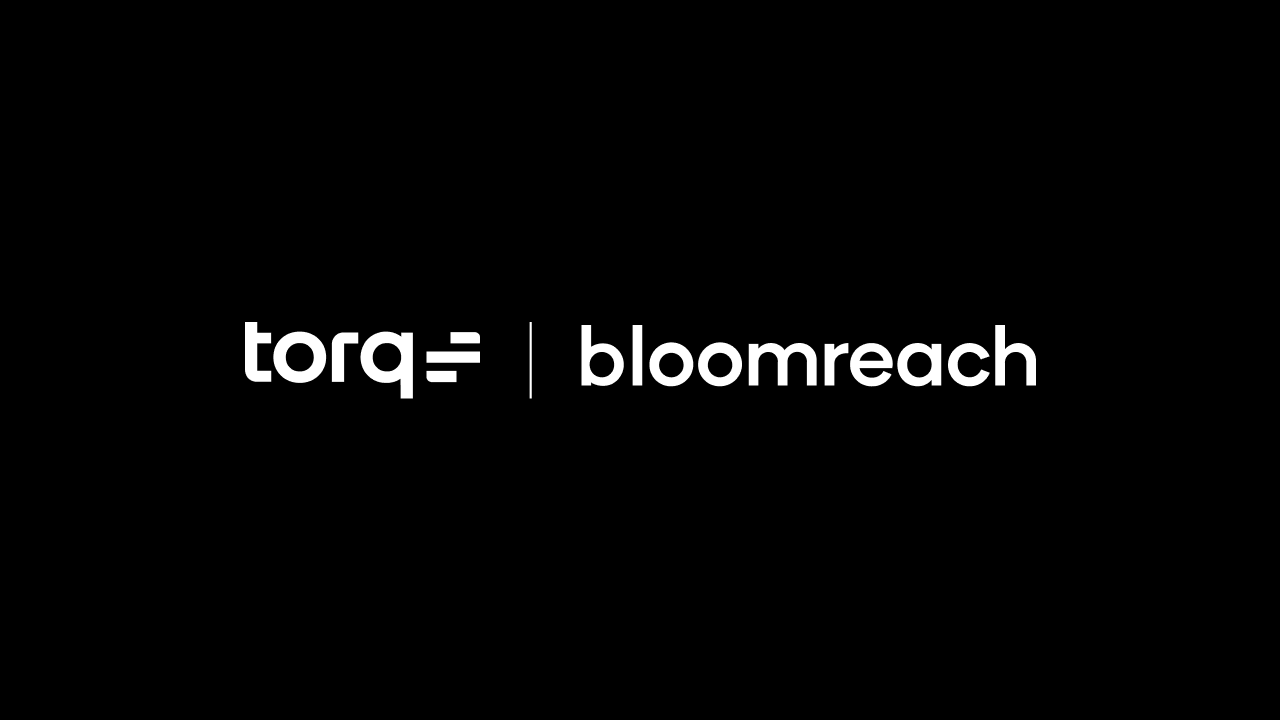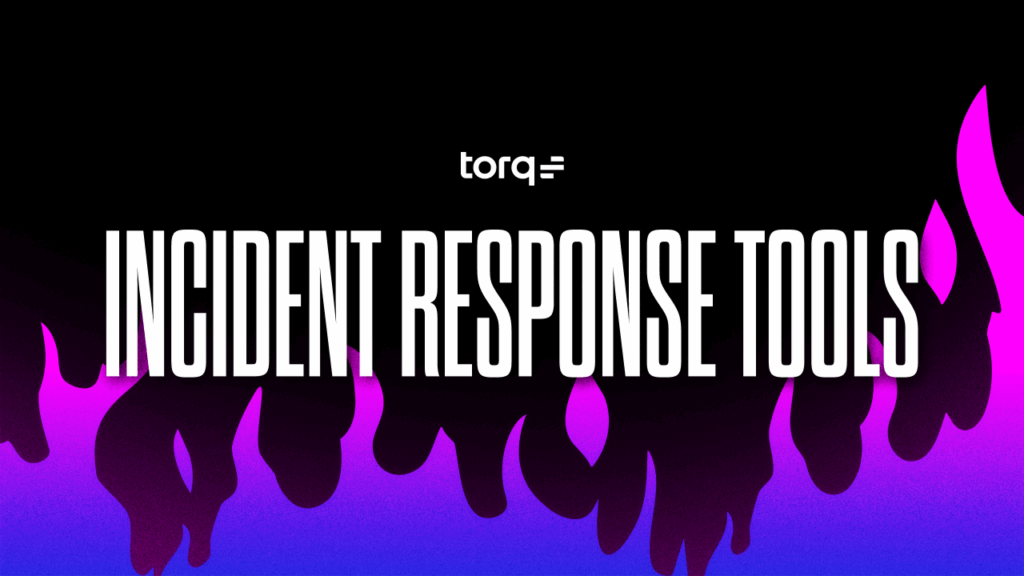Contents
Get a Personalized Demo
See how Torq harnesses AI in your SOC to detect, prioritize, and respond to threats faster.
Security Orchestration, Automation, and Response (SOAR) promised streamlined workflows, quick incident responses, and reduced security analyst workloads. But as cybersecurity threats grew more sophisticated, legacy SOAR solutions showed their critical limitations.
SOAR’s static, rigid workflows and cumbersome integration processes have left many SOCs overwhelmed, struggling with slow response times, high security alert fatigue, and fragmented security toolsets.
Today, traditional SOAR platforms are becoming obsolete, unable to keep pace with rapidly evolving cyber threats. Legacy SOAR solutions typically rely on static playbooks and manual script updates, which quickly become outdated, failing to adapt dynamically to new threats or changing environments. Additionally, traditional SOAR platforms often come with steep learning curves, extensive deployment timelines, and hidden cost, which limit their practicality and reduce their overall ROI.
Hyperautomation and advanced agentic AI tools like Torq offer a powerful alternative, transforming security operations by automating dynamically, intelligently, and at scale. Unlike legacy SOAR, Hyperautomation provides flexibility with no-code workflows, real-time contextual enrichment, and seamless integrations, eliminating the need for extensive manual intervention and continuous maintenance.
By leveraging advanced AI-driven tools, SOC teams can proactively manage threats, dramatically reduce analyst fatigue, and significantly improve response times. AI-powered SOCs outperform traditional SOAR by reasoning through signals, correlating context across tools, and executing adaptive remediation — closing the loop where legacy workflows stall.
What is SOAR in Cybersecurity and How Does It Work?
Legacy Security Orchestration, Automation, and Response (SOAR) was built to stitch together security tools — but relies on brittle scripts and static playbooks. It promised efficiency but delivered complexity, blind spots, and burnout. It’s dead because the modern SOC demands dynamic, AI-driven action, not legacy code and lag time. See why SOAR is dead.
SOAR is composed of three components:
- Orchestration: Orchestration connects disparate security tools into a cohesive ecosystem. SOAR tools coordinate actions and share data across multiple platforms by integrating various security solutions..
- Automation: Automation enables SOC teams to execute repetitive security tasks without human intervention. Common automated actions include blocking IP addresses, isolating infected endpoints, or generating reports..
- Response: Security orchestration and automation provide the foundation for response. Response is where detection turns into action.
How SOAR Works in Practice
Data analysis: SOAR applies correlation rules or basic machine learning to identify indicators of compromise (IOCs), anomalies, or attack patterns.
Enrichment: Alerts are enriched with contextual data like user behavior, asset value, or known threat intelligence to support investigation.
Triage and investigation: Automated playbooks classify incidents by type or severity. Analysts manually investigate with supporting evidence and logs.
Response: Once verified, predefined playbooks carry out static actions like isolating devices, disabling accounts, or opening IT tickets.
By orchestrating and automating these stages, SOAR platforms aimed to improve incident response times, reduce human error, and standardize security operations. However, traditional SOAR often falls short due to rigid playbooks, brittle integrations, and high maintenance requirements.
Limitations of SOAR Solutions in Modern SOCs
SOAR was supposed to be the silver bullet for overloaded SOCs, promising faster response, streamlined workflows, and fewer manual tasks. But, in practice, legacy SOAR platforms introduced new complexity, slowed response times, and failed to adapt to real-world threats.
Here’s why they’re falling behind:
- Poor integrations and limited interoperability: Integration complexities frequently result in limited interoperability, leaving critical data fragmented across isolated tools.
- Disconnected tools, fragmented data: Despite promises of centralization, many SOAR platforms leave vital security tools disconnected, exacerbating inefficiencies.
- Alert overload: Without dynamic context, traditional SOAR platforms struggle to differentiate legitimate threats from noise, overwhelming security analysts. AI-driven triage replaces static playbooks with real-time reasoning that separates noise from high-risk incidents, allowing SOCs to react with precision instead of guesswork.
- Long implementation timelines: Implementing SOAR solutions can take months, significantly delaying any potential benefits.
- High cost with limited ROI: Legacy SOAR investments often fail to deliver sufficient value due to high upfront costs, ongoing maintenance expenses, and poor usability. Worse, their architecture doesn’t scale elastically to cloud workloads, limiting performance under pressure.
Read the SOAR is Dead manifesto >
How Torq HyperSOC™ Outperforms Traditional SOAR
Legacy SOAR systems were designed for a different era of security — one where attacks were slower, data was smaller, and workflows could afford to be linear. But today’s SOCs operate in a world of cloud-native infrastructure, API sprawl, and machine-speed threats. Static playbooks and brittle connectors can’t keep up.
Torq HyperSOC™ was purpose-built to fix what SOAR broke. It eliminates the inflexible playbooks, easy-to-break integrations, and alert overload that plague traditional platforms, replacing them with intelligent, adaptable workflows that actually deliver on the promise of automation. This shift toward AI-powered security operations gives enterprises a SOC that learns, adapts, and evolves — something legacy SOAR architectures were never designed to do.
Here’s how Torq redefines what automation can do.
Faster Response Time
Legacy SOAR tools operate linearly — one workflow, one action, one alert at a time. Each step must complete before the next begins, often delayed by scripts, human approvals, or system latency. This “assembly-line” approach slows detection-to-response cycles, especially when incidents span multiple environments.
Using real-time, parallel execution, Torq’s incident response workflows trigger the right action the moment an event is detected, whether that’s isolating an endpoint, revoking credentials, or opening an investigation. With context-aware automation, Torq eliminates the lag between detection and containment, reducing MTTR from hours to seconds.
Reduced Analyst Fatigue
SOAR was meant to help analysts, but in practice, it buried them in maintenance. Manual setup, constant tuning, and false positives turn every SOC shift into a cycle of triage and exhaustion.
Through AI-assisted triage, enrichment, and decision-making, Torq automatically handles 90% of Tier-1 tasks — validating alerts, enriching data, correlating context, and closing noise. Analysts stay focused on high-impact investigations that truly require human intuition and expertise.
Seamless Integrations
SOAR integrations are often a house of cards, characterized by brittle APIs, manual connectors, and vendor lock-in that restrict flexibility. Each new integration means new scripts, dependencies, and points of failure.
Torq eliminates this friction with native integrations to over 300 security, IT, and cloud tools — from SIEMs and XDRs to identity, collaboration, and ITSM platforms.
Out of the box, Torq unifies:
- Detection sources (like CrowdStrike, Wiz, and SentinelOne)
- Response tools (like Okta, AWS, and Microsoft Defender)
- Collaboration systems (like Slack, Teams, and Jira)
Smarter Decision-Making
Legacy SOAR follows logic, not intelligence. It executes rigid “if/then” sequences that fail when the data doesn’t match expectations. In contrast, Torq thinks before it acts.
At the core of the HyperSOC™ is Socrates, Torq’s AI SOC Analyst — an intelligent AI Agent that autonomously:
- Correlates alerts across multiple tools and data sources
- Validates whether incidents are legitimate or benign
- Enriches with live context from threat intel, user behavior, and asset criticality
- Recommends or executes the next best action, based on policy and risk
This reasoning-driven automation replaces thousands of static playbooks with a single, adaptive brain — capable of evolving as threats, tools, and environments change. These AI-driven decisions create a continuous improvement loop, strengthening detection accuracy and response speed with every incident handled.
Scalable Cloud Architecture
Traditional SOAR architectures are monolithic and lack scalability. Each new tenant, workflow, or data stream adds overhead — eventually choking performance and reliability.
Built on a cloud-native, event-driven architecture, Torq scales horizontally with zero friction. Whether you’re processing 100 alerts per day or 100,000 per minute, the platform’s performance remains consistent and predictable. Every workflow runs as an independent, elastic function — with built-in resiliency, version control, and immutable audit trails for complete compliance.
That’s how enterprises use Torq to automate across multi-cloud environments, hybrid SOCs, and distributed teams, all while maintaining governance, visibility, and control.
5 Steps to Modernize Your SOC With Hyperautomation
SOAR is dead, thanks to Hyperautomation. And you’re not alone in trying to figure out how to move on. Enterprises everywhere are abandoning legacy SOAR systems that have become more burden than benefit.
If you’re worried about the complexity of migration, don’t be. Torq makes the transition fast, seamless, and transformative. Whether you’re replacing XSOAR, Phantom, or another legacy platform, Torq has helped global enterprises make the switch in weeks.
Here’s how to kill your SOAR (for good) and evolve your SOC into an autonomous, Hyperautomated powerhouse.
1. Build Your Migration Blueprint
Audit your current SOAR: workflows, integrations, and pain points. Identify which automations matter most and where Torq can deliver immediate ROI. The Torq team helps you map every dependency, prioritize key use cases, and define measurable success metrics before you start.
2. Migrate Workflows and Integrations
Connect Torq to your existing tools — SIEM, XDR, IAM, email, and more — using 300+ native integrations. Your playbooks, data, and logic move into dynamic, no-code workflows that actually scale. You can even expand automation to new tools your SOAR couldn’t support.
3. Test, Tune, and Validate
With Torq, testing is built-in. Validate every workflow step in real time, spot issues instantly, and iterate fast. You can run Torq alongside your old SOAR during migration to ensure nothing slips through the cracks.
4. Go Live — and Scale Fast
Launch in phases, starting with high-impact automations. Once live, Torq’s event-driven architecture keeps performance consistent at any scale — from hundreds to hundreds of thousands of alerts per hour.
5. Learn, Optimize, and Evolve
Through our onboarding program, Torq’s architects work alongside your analysts to build priority use cases, accelerate adoption, and upskill your team. As you go, AI Agents like Socrates and the AI Workflow Builder elevate your SOC from automated to autonomous.
This is where AI-powered SOCs pull ahead — continuously refining workflows, shrinking MTTR, and eliminating the operational drag created by legacy SOAR.
Torq Use Cases That Improve SOC Performance
Reduce Alert Fatigue
SOC teams overwhelmed by constant noise use Torq Hyperautomation to validate alerts, enrich context, and automatically suppress false positives. This removes the manual triage burden and keeps analysts focused on real incidents.
The result: 80% less alert fatigue and 10x faster incident response time.
Accelerate Cloud Remediation
When Wiz or CSPM tools detect a risky misconfiguration, Torq triggers parallel remediation workflows instantly. These workflows notify the right teams, apply policy-based fixes, and confirm remediation without waiting for human intervention.
The result: Critical cloud exposures resolved in minutes instead of hours.
Eliminate Tier-1 Backlog
Torq’s AI Agents autonomously triage alerts, correlate signals across tools, and escalate only validated threats. Routine Tier-1 tasks — enrichment, user verification, risk scoring — run end to end without analyst involvement.
The result: More than 90 percent of Tier-1 workload automated, giving analysts time for deeper investigations.
Kill Your SOAR. Make the Switch.
While SOAR cybersecurity was a significant step forward in security automation, its limitations are evident. Modern SOC teams require dynamic, adaptive, and intelligent tools that can scale effortlessly and deliver immediate value.
Hyperautomation, as delivered by Torq, empowers SOCs to achieve true operational agility, dramatically faster response times, and improved overall security posture, without the complexity and rigidity of traditional SOAR.
Modern SOCs are moving beyond SOAR. With agentic AI, Hyperautomation, and context-driven orchestration, Torq delivers faster, more accurate, and more scalable operations — proving why AI-enabled SOCs are rapidly becoming the enterprise standard. Get the migration guide and see how your SOC can do more.
FAQs
SOAR (Security Orchestration, Automation, and Response) is a cybersecurity framework that helps streamline security operations by connecting and automating tools across the SOC. It combines orchestration, automation, and incident response to help security analysts manage threats more efficiently. Traditional SOAR tools centralize alerts from systems like SIEM, EDR, and threat intelligence feeds, then execute predefined playbooks to respond to potential incidents.
SOAR platforms were built to automate repetitive tasks such as alert triage, correlation, and enrichment. When a detection event occurs, the SOAR platform retrieves related data from threat intelligence sources and applies automated playbooks to determine the next steps, such as isolating an endpoint, disabling a user, or opening a case for investigation. While this improves response time, legacy SOAR tools often rely on static logic that can’t adapt to evolving threats, leading many SOCs to adopt AI-driven Hyperautomation for faster, more intelligent response.
Legacy SOAR systems suffer from:
- Slow performance due to linear playbook execution
- Limited scalability for large or multi-cloud environments
- Integration gaps that fragment visibility across SIEM and detection tools
- High maintenance requirements for scripting and rule tuning
- Alert fatigue and false positives that overwhelm analysts
That’s why many organizations are replacing SOAR with AI-powered Hyperautomation to achieve real-time incident response, adaptive threat detection, and continuous orchestration across the full SecOps stack.
Hyperautomation builds on SOAR’s foundation but eliminates its rigid, static architecture. Instead of executing fixed playbooks, Hyperautomation platforms like Torq HyperSOC™ use AI reasoning, dynamic workflows, and contextual orchestration to make intelligent decisions in real time.
This enables security teams to:
- Correlate data automatically from SIEM, threat intelligence, and endpoint tools
- Automate incident response actions like containment, remediation, and recovery
- Enhance vulnerability management with live risk scoring
- Reduce manual triage and improve analyst productivity
SOAR was originally designed to enrich alerts with threat intelligence, but modern threat hunting requires more agility than static SOAR workflows allow. Torq’s Hyperautomation platform automatically correlates live threat feeds with SIEM and detection data, enriching every incident with context such as asset criticality, user behavior, and attack patterns. Analysts can then launch automated threat hunts, identify high-risk vulnerabilities, and take response actions directly within the same workflow — without manual handoffs or repetitive tasks.
Only to a limited extent. Traditional SOAR tools can trigger patching workflows or ticket creation, but they often operate in silos. Torq’s HyperSOC™ fully integrates vulnerability management and case management into its automation engine. When a new vulnerability or endpoint alert is detected, Torq automatically correlates it with threat data, prioritizes by business risk, and executes automated response actions — all while maintaining full auditability for compliance.
Not anymore. Today’s threats move faster than SOAR’s static systems can handle. The next evolution is AI-driven Hyperautomation, which merges orchestration, intelligence, and automation into one adaptive SOC platform.
With Torq, security teams achieve:
- Instant response to emerging threats
- Continuous threat detection and incident response
- Unified orchestration across every security and IT tool
- Reduced analyst fatigue and improved SOC efficiency







